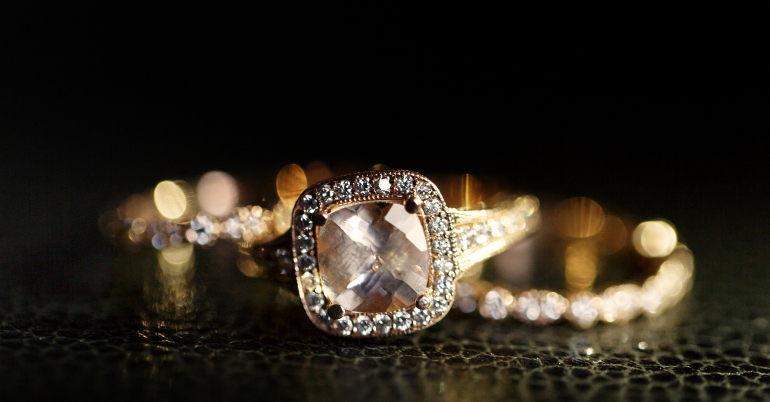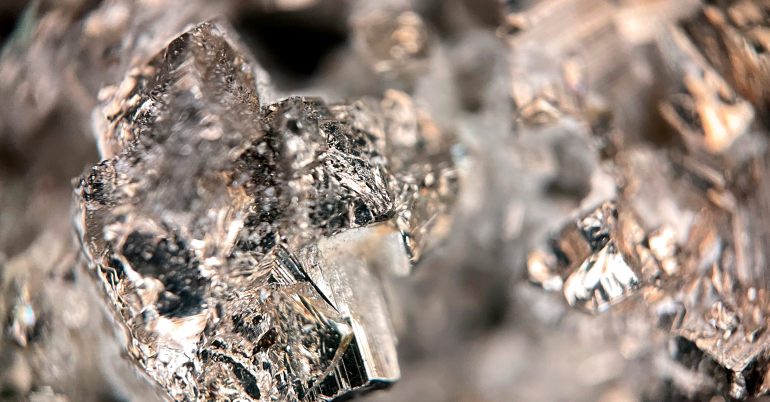Luxurious sparkle, timeless elegance, and the allure of precious gemstones have captivated humans for centuries. In the world of gemstone jewelry, the word "carat" is as crucial as the luster of a diamond or the vivid hue of an emerald. From measuring the purity of gold to the intricacies of a diamond carat, the measurement is used by jewelers all over the world.
But what is a carat, and why is it so pivotal when choosing the jewelry that will adorn us, or the loved ones we hold dear?
Luckily, our experts at Edwin Novel can tell you everything you need to know about carats. Whether you want to know how many carats are in your diamond earrings or simply how the jewelry industry uses the measurement, we have you covered:
Defining Carat and Its Role in Jewelry
Carat is the universal unit of measurement to identify the weight or mass of a gemstone or pearl. While you’ve likely heard the term before, you’re not alone if you don’t know the details.
Simply put, carat refers to the weight of the stone, with each carat representing 200 milligrams. This weight directly corresponds to the stone's size, a quality considered paramount in the attractiveness and value assessment of gemstone jewelry. Understanding carats can help you make an informed decision when investing in a piece that could become an heirloom.
The Origin and History of the Carat
The term "carat" has a profound historical underpinning. It dates back to ancient times, believed to have originated from the Greek word "kerátion," which referred to the carob seeds used by traders as counterweights on their balance scales. The practice of using small weights to measure gold purity (whether it's pure gold or not) and gemstones led to the carat being standardized to 0.2 grams and became the yardstick for valuing precious stones.
Deciphering Carats for Consumers
For the eager consumer, knowledge of carats can influence not only the aesthetic considerations of their jewelry but also its value and durability. Different gemstones have different densities and therefore, two stones of the same carat might differ in size.
We'll explore how carat weight interacts with the cut, color, and clarity of a gem – the well-known "Four Cs" that dictate a stone's beauty. This insight is empowering, equipping shoppers with the wisdom to discern the subtleties of varying carat weights.

Understanding Carat Weight in Gemstones: A Comprehensive Guide
Unveiling the Carat Weight: Size and Value
The carat weight of a gemstone is a crucial element that influences its size and price, making it a crucial consideration within the jewelry industry. But what exactly is a carat when it comes to gemstones?
As mentioned previously, one carat is a unit of mass specifically used to measure diamond weight and other gemstones. A single carat is equivalent to 200 milligrams, a weight that may seem minuscule, but can manifest in grand visual appearances and substantial price tags. This means that carat weight directly influences gemstone weight.
The Significance of the Carat in Size
The relationship between carat weight and size is straightforward—a higher-carat diamond is usually larger in appearance. However, this correlation between weight and visual size is not a perfect one-to-one, as the cut and shape of the gemstones can also play a pivotal role. For instance, a well-cut diamond might appear larger than its carat weight would suggest due to the way it reflects light. Likewise, the shape of the gemstone can spread the apparent size over a wider area or concentrate it in a smaller space.
Measuring Carat Weight
Carat weight is measured with precision, using scales that can calculate down to the milligram. The process is meticulous, as the slightest inaccuracy could affect the value and even authenticity of a gemstone. Jewelers and gemologists use highly accurate scales to measure carat weight, ensuring that customers receive the precise carat weight they pay for, down to the hundredth of a carat.
Factors Influencing Apparent Size
Although carat weight is a significant contributor to the size of a gemstone, it's not the sole determinant of perceived stone size. The cut of a stone, particularly for diamonds, can visibly alter the stone's size. For example, a diamond with a wider table (the flat top surface) might appear larger than one with a smaller table, even if their carat weights are the same. The shape of a gemstone also comes into play; some shapes, like ovals and marquises, have larger surface areas compared to rounds or emeralds of the same carat weight.
The Marriage of Carat Weight and Gemstone Pricing
Pricing a gemstone is an intricate dance between art, science, and market economics. Carat Weight is one of the leading choreographers in this performance, setting the stage for the other actors like color, clarity, and cut to perform their roles in harmony.
The Carat's Role in Price Determination
High-carat weight gemstones, all things being equal, will command higher prices due to their rarity. This is an ‘all things being equal' scenario, however, the stone’s stone's color, clarity, and cut can also drastically influence the final price. In reality, the price per carat of a gemstone is not a linear scale; as carat weight increases, the price doesn't increase at the same rate, and for certain thresholds, the price might skyrocket thanks to a magical carat value, such as reaching 1 carat or 2 carats.
Factors Influencing Price Per Carat
Just as a diamond's carat weight is important, so too is its color and clarity. The most valuable diamonds are those that are completely colorless and have no inclusions or blemishes when viewed under 10x magnification. These characteristics, known as the four Cs (cut, color, clarity, and carat), interact in complex ways to determine a stone's price.
Larger stones with the highest grades for color and clarity can reach stratospheric prices, making them significant investments and coveted pieces. However, smaller stones that possess rare coloring or exceptional clarity can also be highly prized and valuable.
Examples of Carat Weight Impact on Gemstone Jewelry Cost
To emphasize the relationship between carat weight and gemstone cost, consider an example of how a diamond engagement ring's price might be affected by carat weight. A one-carat diamond of good quality can cost significantly more than a smaller diamond of the same quality.
Scaling up to a two-carat diamond, the price might quadruple due to the rarity of larger, high-quality diamonds. This stark increase in price makes carat weight a notable factor in the affordability and market value of gemstone jewelry. Whether it be yellow or white gold jewelry, diamond jewelry, or something with precious stones, understanding how the "carat" system is important.
In the world of gemstone jewelry, a carat is more than a unit of weight – it's a measure of history, a key to value, and a parameter for aesthetic consideration. By unraveling the mysteries of carat, shoppers can enrich their experience, making purchases that reflect their discernment and understanding. The investment in this knowledge translates to a lifetime of appreciation for the brilliance and beauty that gemstones offer.

Shop For Stunning Diamond Jewelry At Edwin Novel
Looking for beautiful diamond jewelry available in various carat sizes? At Edwin Novel, we pride ourselves on offering the highest quality diamond jewelry pieces. All of our jewelry comes in intricate designs and patterns at an affordable price, allowing you to find something that your partner will love.
So, if you want to invest in diamond jewelry measured precisely and accurately, contact us today!

















